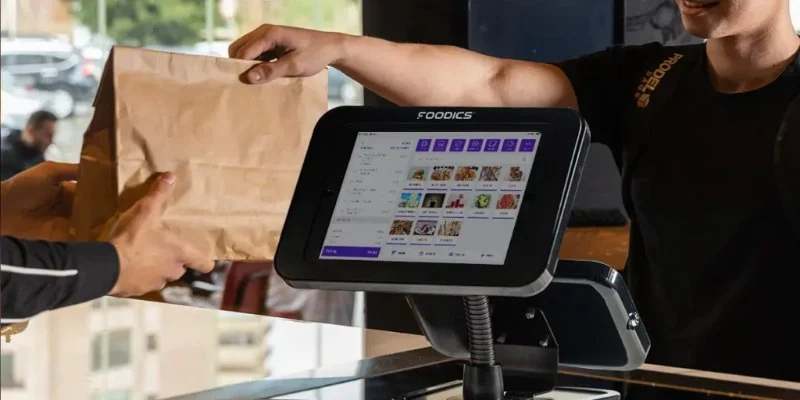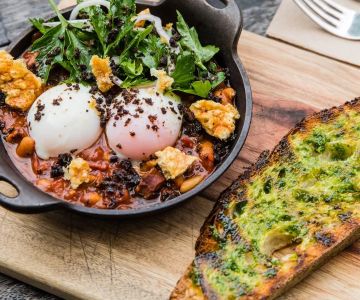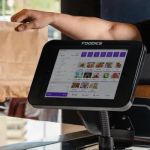
- 1. Understanding Gamification in Dining
- 2. The Rise of Gamified Dining in Australia
- 3. How Australian Restaurants Are Incorporating Gamification
- 4. Benefits of Gamification in the Restaurant Industry
- 5. Real-Life Examples of Gamified Dining Experiences
- 6. The Future of Gamification in Dining Experiences
1. Understanding Gamification in Dining
Gamification is the integration of game-like elements into non-game contexts to engage users, increase participation, and create fun experiences. In the restaurant industry, gamification is used to enhance customer engagement by incorporating elements such as challenges, rewards, and interactive experiences into the dining process.
Instead of a traditional meal experience, gamified dining introduces playful elements that encourage customers to actively participate in their meals. These might include earning points, competing in challenges, or unlocking rewards through interactions with the restaurant. The goal is to make dining more engaging, memorable, and entertaining, all while encouraging repeat visits and building customer loyalty.

Little Sparrow QVB
SydneyCouncil of the City of SydneyNew South Wales
Queen Victoria Building, Sydney NSW 2000, Australia
2. The Rise of Gamified Dining in Australia
Australia has always been known for its innovative and dynamic food scene, and gamification in dining is no exception. As technology continues to evolve, Australian restaurants are increasingly turning to gamification to stand out in a competitive market. This trend has been driven by the growing desire for interactive and memorable experiences among consumers, particularly younger generations.
Restaurants across Australia are embracing gamification as a way to create a unique dining experience that appeals to tech-savvy customers. Whether through smartphone apps, interactive menus, or immersive in-store activities, gamified dining is becoming a popular way for restaurants to attract new customers and keep them coming back for more.

Little Chinese Kitchen
SydneyCouncil of the City of SydneyNew South Wales
22ALP Market St, Sydney NSW 2000, Australia
3. How Australian Restaurants Are Incorporating Gamification
Australian restaurants are using various gamification techniques to enhance their dining experiences. Here are some ways gamification is being integrated into the restaurant scene:
- Mobile Apps and Loyalty Programs: Many restaurants now offer mobile apps that allow customers to earn points or rewards for actions such as making a reservation, ordering food, or visiting frequently. These apps often feature game-like elements such as levels, badges, and challenges that encourage customers to engage more with the brand.
- Interactive Menus and Games: Some restaurants incorporate interactive menus or digital screens where customers can play games while they wait for their food. These games might involve trivia, quizzes about the restaurant’s menu, or mini-challenges that offer rewards or discounts for participation.
- Themed Dining Experiences: Gamified experiences in Australian restaurants also include themed nights where diners participate in challenges related to the theme. For example, a restaurant might host a “foodie scavenger hunt,” where customers must solve clues or complete tasks to earn rewards, such as discounts or free items.
- Social Media Engagement: Many restaurants use social media platforms to create gamified experiences, encouraging customers to take part in online challenges or share their dining experiences in exchange for points or exclusive rewards. Hashtags, photo contests, and check-in challenges are common ways to engage customers digitally.
By using these gamification strategies, restaurants create a fun, interactive experience that not only entertains diners but also strengthens brand loyalty and encourages repeat visits.
4. Benefits of Gamification in the Restaurant Industry
Gamification offers numerous benefits to restaurants looking to stand out in a crowded market. Here are some of the key advantages:
- Increased Customer Engagement: By introducing game-like elements, restaurants can engage customers in new and exciting ways, making dining out more enjoyable and encouraging active participation throughout the meal.
- Brand Loyalty and Retention: Gamified experiences often include rewards programs, which can increase customer loyalty and encourage repeat visits. Customers are more likely to return to a restaurant where they can earn points, unlock rewards, or enjoy special perks.
- Enhanced Social Media Presence: Gamification often encourages customers to share their experiences on social media. This can help restaurants build a stronger online presence, attract new customers, and create buzz around their brand.
- Increased Revenue and Upselling: Restaurants that use gamification can potentially increase their revenue through upselling and incentivizing customers to order more. For example, rewards might be tied to the number of items ordered or the amount spent, encouraging customers to choose more expensive options.
Overall, gamification is a win-win for both restaurants and diners, providing entertainment while driving customer loyalty and business growth.
5. Real-Life Examples of Gamified Dining Experiences
Several Australian restaurants have already embraced gamification with impressive results. Here are a few notable examples:
- The Fork & Knife Bistro: This popular Melbourne restaurant has introduced a loyalty app where customers can earn points for every meal they purchase. These points can then be used for discounts or free items. The app also features challenges like “Dine and Discover” where customers can unlock additional rewards by trying new dishes or visiting at specific times.
- Grill’d: Known for its healthy burgers, Grill’d has launched a gamified loyalty program where customers can earn “Grill’d Points” by making purchases or sharing their experiences on social media. These points can be redeemed for rewards like free drinks, sides, and even free burgers.
- Hungry Jack’s: As part of its effort to enhance customer engagement, Hungry Jack’s has implemented a mobile app that incorporates gamified elements like challenges, daily bonuses, and the chance to win prizes. The app allows customers to unlock exclusive deals and rewards based on their activity.
These real-world examples show how gamification can transform the dining experience, making it more engaging, rewarding, and fun for customers.
6. The Future of Gamification in Dining Experiences
As technology continues to advance, the potential for gamification in the restaurant industry is vast. Future trends could include even more immersive experiences, such as virtual reality (VR) dining games, interactive table settings with built-in games, and AI-powered personalization that tailors the dining experience based on customer preferences.
Moreover, as the demand for interactive and socially connected dining experiences grows, restaurants will likely continue to innovate in this space, offering new and exciting ways for diners to engage with their meals and the restaurant’s brand.
If you’re a foodie looking to experience these gamified dining experiences, check out Sydney Eats Explorer for the latest recommendations on the best restaurants incorporating gamification into their dining experiences.







 Metropole Cafe4.0 (1020 reviews)
Metropole Cafe4.0 (1020 reviews) Hanaichi Sydney Central Plaza4.0 (12 reviews)
Hanaichi Sydney Central Plaza4.0 (12 reviews) Vogue Cafe Sydney4.0 (1880 reviews)
Vogue Cafe Sydney4.0 (1880 reviews) Esque4.0 (8 reviews)
Esque4.0 (8 reviews) Venchi - The Galeries Sydney4.0 (805 reviews)
Venchi - The Galeries Sydney4.0 (805 reviews) Gowings4.0 (1121 reviews)
Gowings4.0 (1121 reviews) Vegan-Friendly Restaurants in Melbourne That Even Meat-Eaters Love
Vegan-Friendly Restaurants in Melbourne That Even Meat-Eaters Love What Makes a Great Brunch Spot in Sydney? We Asked Locals | Sydney Eats Explorer
What Makes a Great Brunch Spot in Sydney? We Asked Locals | Sydney Eats Explorer How AI Is Personalising Dining in Australia - The Future of Restaurants
How AI Is Personalising Dining in Australia - The Future of Restaurants The Best Breakfast Spots in Australia for Food Lovers
The Best Breakfast Spots in Australia for Food Lovers How Restaurants Are Using Gamification in Dining Experiences in Australia
How Restaurants Are Using Gamification in Dining Experiences in Australia How Restaurants Are Using Sustainability Certifications to Attract Diners in Australia
How Restaurants Are Using Sustainability Certifications to Attract Diners in Australia